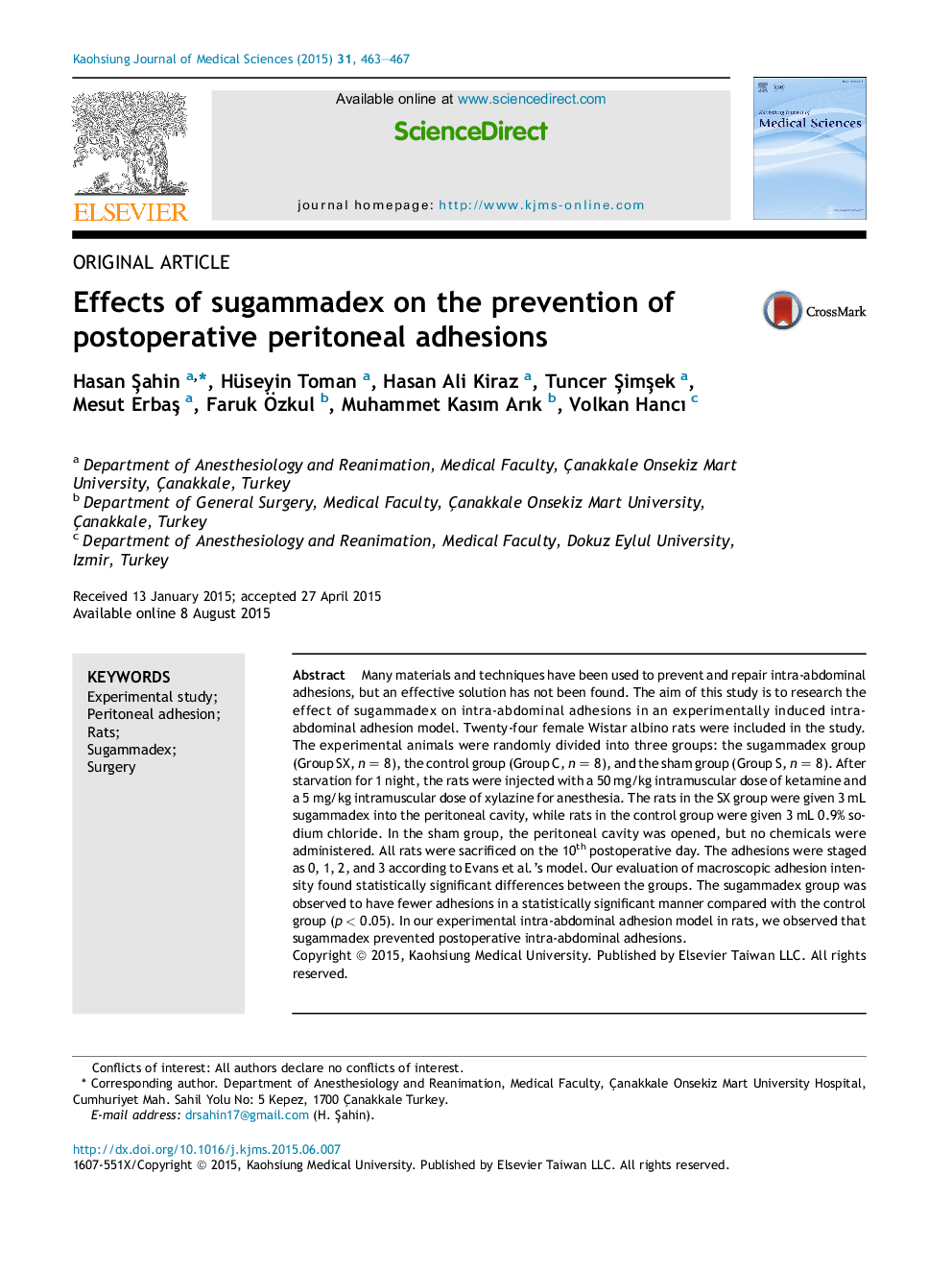| Article ID | Journal | Published Year | Pages | File Type |
|---|---|---|---|---|
| 3485272 | The Kaohsiung Journal of Medical Sciences | 2015 | 5 Pages |
Many materials and techniques have been used to prevent and repair intra-abdominal adhesions, but an effective solution has not been found. The aim of this study is to research the effect of sugammadex on intra-abdominal adhesions in an experimentally induced intra-abdominal adhesion model. Twenty-four female Wistar albino rats were included in the study. The experimental animals were randomly divided into three groups: the sugammadex group (Group SX, n = 8), the control group (Group C, n = 8), and the sham group (Group S, n = 8). After starvation for 1 night, the rats were injected with a 50 mg/kg intramuscular dose of ketamine and a 5 mg/kg intramuscular dose of xylazine for anesthesia. The rats in the SX group were given 3 mL sugammadex into the peritoneal cavity, while rats in the control group were given 3 mL 0.9% sodium chloride. In the sham group, the peritoneal cavity was opened, but no chemicals were administered. All rats were sacrificed on the 10th postoperative day. The adhesions were staged as 0, 1, 2, and 3 according to Evans et al.'s model. Our evaluation of macroscopic adhesion intensity found statistically significant differences between the groups. The sugammadex group was observed to have fewer adhesions in a statistically significant manner compared with the control group (p < 0.05). In our experimental intra-abdominal adhesion model in rats, we observed that sugammadex prevented postoperative intra-abdominal adhesions.
